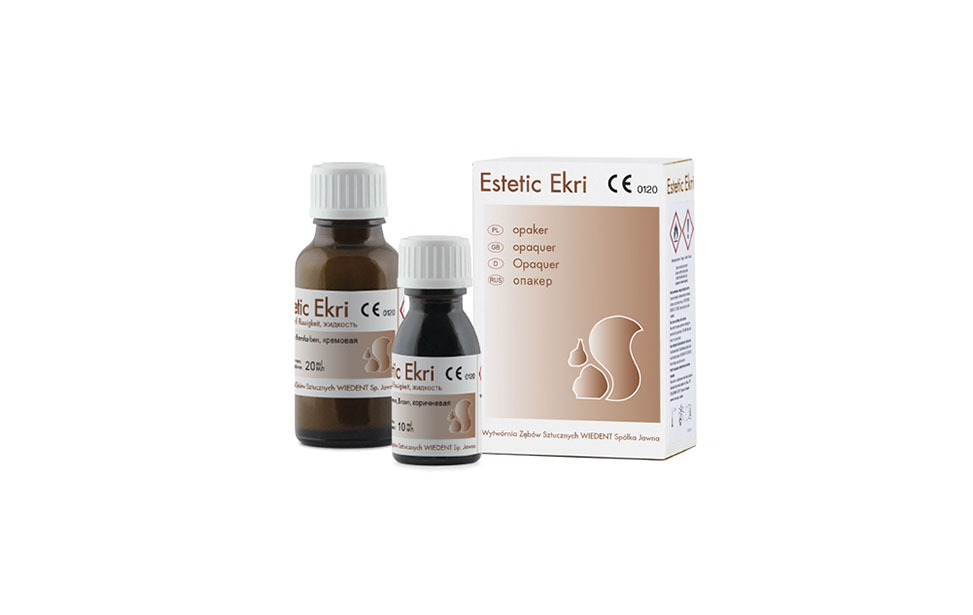Estetic Ekri 
opaquer

- used to conceal the reflection of metal elements in crowns and bridges,
- consists of liquids in ecru and brown colour, mixing them helps to obtain the required beige shade,
- can be applied on both metal and plastic elements.
Packaging:
Set:
- 20 ml ecru colour liquid, 10 ml brown colour liquid.
Application:
Estetic Ekri is designed for application onto metal constructions of crowns and bridges faced with acrylic material to eliminate metallic reflexes interfering with the color. For better esthetic effect, the varnish can also be applied onto the internal surfaces of crowns.
Direction for use:
Modeling of the wax facing on rough, abraded surface of crowns and bridges should be done according to the conventional method.
After molding and melting off the wax, cool the mold to room temperature. Shake the priming varnish before use and close tightly after use. Use a brush or a fine blade to apply a thin layer of the varnish onto the surface to be faced.
Sometimes it is necessary to apply the second layer. If retention globules are used, avoid excess filling of the undercut. After the varnish is dried completely, form the facing made of Estetic H by pressing.
In case of volatile fraction evaporation, the varnish can be diluted with a small amount of methyl methacrylate monomer.
The manufacturer recommends the following guidelines to be included in instructions for the patients:
- crowns and bridges should be washed with a tooth-brush and toothpaste;
- damaged crowns and bridges should be repaired only by a dental technician or a dentist,
- the adjustment of crowns and bridges should be regularly checked by a dentist.
Storage:
Keep in tightly-closed containers in well-ventilated rooms. Keep out of the reach of children.
Best before: 3 years from the date of production.
WARNING:
The liquid is inflammable and also irritant. Avoid inhaling the vapours and prevent any contact with the skin and eyes. In case of contact, rinse thoroughly with water and, if any, contact your ophthalmologist.
Don't dispose of the remainder of the liquid into the sewer. Dental technicians are warned against inhaling dust while carrying out prosthesis work. When engaged in this work, using of a dust-mask and a fume cupboard is recommended.
- Instruction
- Instructions for use of ESTETIC EKRI
- Order form
- Auxiliary products
- Safety Data Sheet
- SDS_Est_Est H_Est Ekri_liquid
- Catalogue page
- Estetic Ekri
